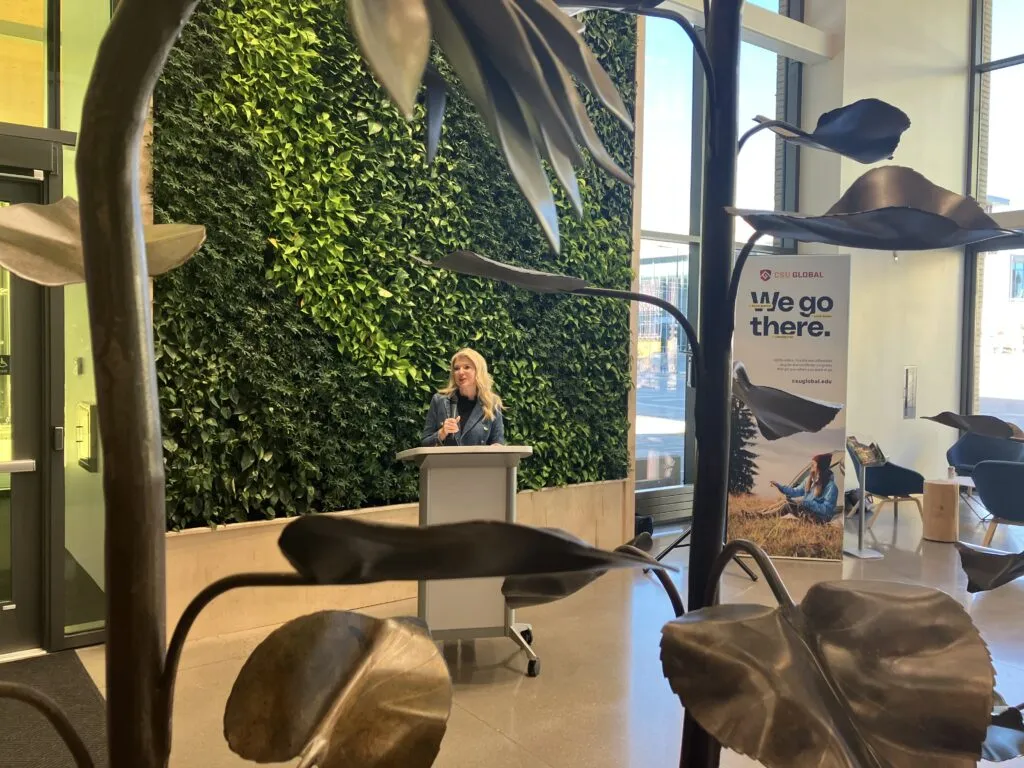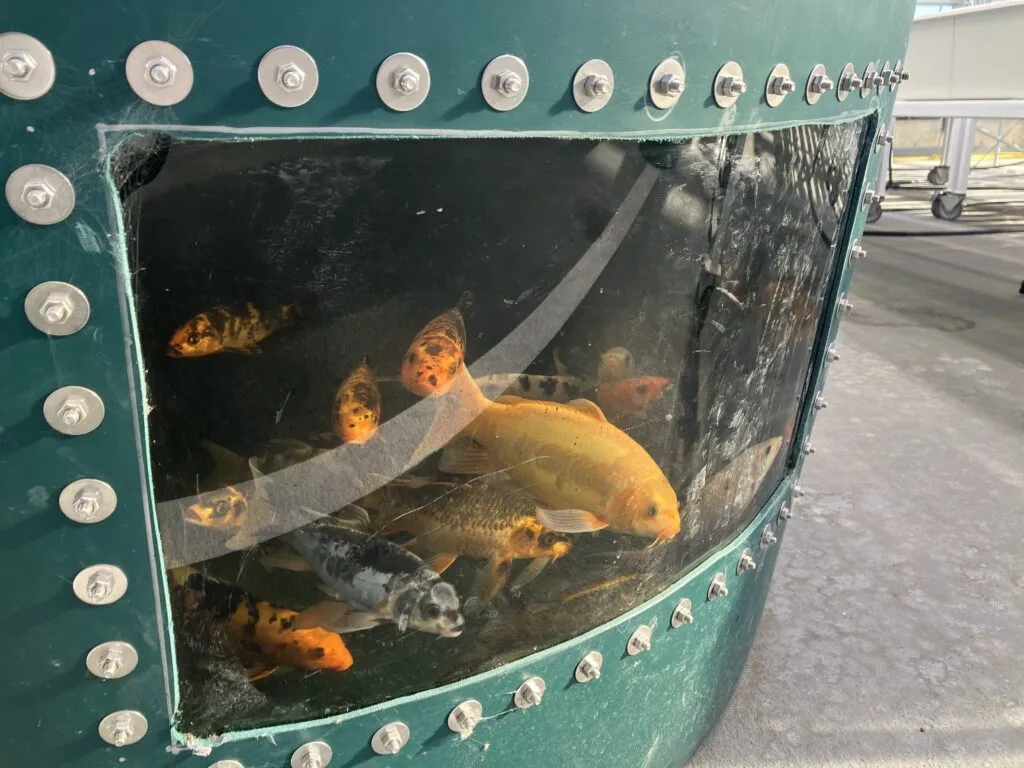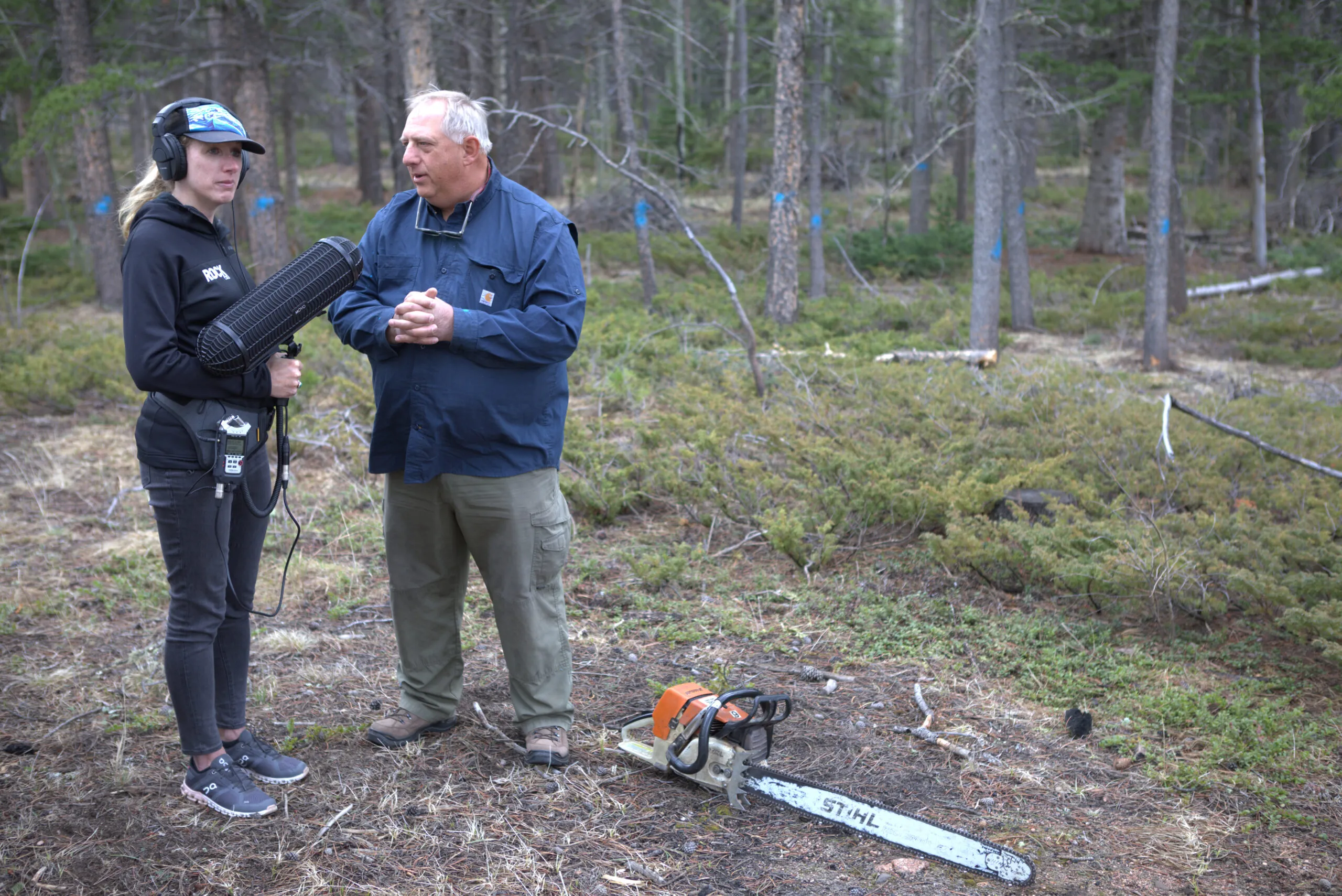Making a MARC
CSU’s new Denver research center strengthens city-agriculture connections

DENVER — While dense urban areas make up a relatively small portion of Colorado’s landmass, the overwhelming majority of the state’s population lives in metropolitan zones where they tend to have infrequent personal contact with the farms and ranches where their food originates.
Colorado State University’s newly opened Metropolitan Agricultural Research Center, or MARC, at the CSU Spur Campus in Denver, aims to bridge this gap by highlighting and advancing urban agriculture practices, making farming more familiar for those who live in and around Denver, the state’s largest population center.
The MARC facility, one of CSU’s designated Colorado Agricultural Experiment Stations, is “a unique space where traditional ag meets the realities of modern urban living,” CSU College of Agricultural Sciences dean Carolyn Lawrence-Dill said during a December grand-opening celebration, “and that connection is key to building a sustainable future.”
SPONSORED CONTENT
Located within the CSU Spur’s Terra Building adjacent to the National Western Stock Show complex, MARC features vertical agriculture space, a green roof for growing plants under the Denver sun, a 2,400-square-foot greenhouse, crop-growth chambers, laboratories and agrivoltaic installations.

“MARC is all about innovation, about pushing boundaries and coming up with new ways to tackle (issues such as) climate change or how we use natural resources,” Dill said.
The facility allows CSU faculty and students to conduct publishable research related urban agriculture challenges — the creation of organic fertilizers from common materials found in cities, for example — and connect with industry partners to turn scientific discoveries into real-world applications.
MARC has a special composter that turns waste into a dry powder that could be used in the cultivation of mushrooms, and researchers at the facility have formed a partnership with FarmBox Foods to build hydroponic farms inside shipping containers in an effort to grow native tree seedlings for planting in parts of Colorado where wildfires have wiped out broad swaths of forest.
“It’s a broader ecosystem that makes work here we do really innovative and impactful,” MARC manager Jake Holley said.
The work done at MARC “is about improving urban food access, strengthening and expanding the local and global food and ag economy, fostering innovation, building resilience through colocation, collaboration, and community engagement,” CSU president Amy Parsons said.

Community outreach is an important part of CSU Spurs mission, and leaders at the facility expect that MARC will be a popular place field trip destination for young students to learn how to better connect with the food that’s served in their school cafeterias.
The grand-opening event featured taste tests and pickling demonstrations with strawberries and cucumbers grown by CSU researchers.

“It’s that acquisition of knowledge, sharing it with people and training the next generation of agricultural leaders that really means a lot to me here at the research center,” Holley said.
The Colorado Agricultural Experiment Station program, established by the Hatch Act of 1887, “created a system of research centers in connection with the country’s land-grant universities,” according to CSU. “As part of that network, CAES staff and CSU faculty conduct numerous experiments in unique regional environments that are designed to address both local and national agricultural challenges.”
Adding a Denver facility to Colorado’s Agricultural Experiment Station network bolsters CSU’s standing as a premier land-grant institution, university leaders said. MARC is the first new agricultural research center CSU has launched since 1992, when the Agricultural Research, Development and Education Center, or ARDEC, opened in Fort Collins.
“We talk a lot about a renaissance in the land-grant mission at CSU and what it means to be a 21st Century land grant institution,” Parsons said during the MARC grand opening .
“Looking back at our roots, think about this place where we are right now,” she said. “This is the historic site of the National Western Stock Show since 1906. These are hallowed grounds for agriculture and for Colorado. …This is the place where we’re really making that bridge between urban and rural systems, between the academy and the research that we do in the community.”
The 300,000-square-foot CSU Spur campus, built by Kansas City-based JE Dunn Construction Group, has three buildings, the newest of which opened last year, each with a different agricultural focus.
The Vida building is geared toward animal and human health; the Hydro facility focuses on water usage and conversation; and the Terra building, home to MARC, is where agriculture and the food it produces are highlighted.
The entire Denver campus is the result of more than a decade of work by the university’s Fort Collins and Pueblo campuses and CSU Global, Jocelyn Hittle, associate vice chancellor of CSU Spur, said when the complex was nearing completion in 2022. “The original concept started back in 2012 when the Stock Show Association was thinking about its future and reached out to its partners to talk about reimagining the complex. How could we make it more of a year-round destination and diversify it? How do we not only celebrate the city’s history but talk about big issues now — the flip side of looking backward?”
A partnership between CSU, the Stock Show, History Colorado and the Denver Museum of Nature and Science was formalized in late 2013, planning for the physical campus began in 2014, and in 2015 the state Legislature approved $250 million toward the project — $200 million for the capital construction and $50 million to the Fort Collins campus to develop Spur planning.

Philanthropy also has helped fuel the project, including a $3 million gift in June from the Morgridge Family Foundation to support CSU’s College of Agricultural Sciences and educational programming at CSU Spur.
Even if most Coloradans — and most residents of the developed world, more broadly — have little daily interaction with farming, agriculture remains “humanity’s largest industry,” Colorado Agricultural Experiment Station director Eugene Kelly said.
“CSU is down here (in Denver) doing really, really important work,” he said, and “our urban communities are (a) really important” part of solving humanity’s sustainability challenges.
Colorado State University’s newly opened Metropolitan Agricultural Research Center aims to bridge the urban-farm gap.
THIS ARTICLE IS FOR SUBSCRIBERS ONLY
Continue reading for less than $3 per week!
Get a month of award-winning local business news, trends and insights
Access award-winning content today!





